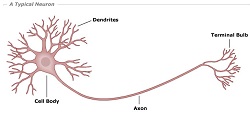Tissues - Solutions
CBSE class IX Science
(Page No. 69)
1. What is a tissue?
Ans. It is a group of cells similar in origin and structure and they are specialized to perform a particular function like muscle cells in our body forms the muscle tissue that bring about body movements (specific function).
2. What is the utility of tissues in multi-cellular organisms?
Ans. There is a clear cut division of labour in multicellular organisms i.e. different parts of the body of a multicellular organism perform specific functions. For example, brain controls all other parts of body, heart pumps blood to all parts of body, kidneys remove waste materials from body, sense organs collect information from external sources for sensory perception etc. All these functions would never be possible without formation of tissues in multicellular organisms.
(Page No. 74)
1. Name types of simple tissues.
Ans. The simple tissues (found in plants) are of following three types:
i) parenchyma
ii) collenchyma
iii) Sclerenchyma
2. Where is apical meristem found?
Ans. The apical meristem is found at the apex (growing tips) of the stem and roots.
3. Which tissue makes up the husk of coconut?
Ans. Sclerenchymatous fibres
4. What are the constituents of phloem?
Ans. The constituents of phloem are: sieve tubes, companion cells, phloem parenchyma, phloem fibres (bast).
(Page No. 78)
1. Name the tissue responsible for movement in our body.
Ans. Muscle/muscular tissue.
2. What does a neuron look like?
Ans. A neuron comprises of a cell body (cyton) along with one or more short branches(Dendron) and one hair like long branch (axon).

3. Give three features of cardiac muscles.
Ans. (i) Cardiac muscles are involuntary i.e. they don’t work under our will.
(ii) Its cells are cylindrical, branched, striated and uninucleate.
(iii) It shows rhythmic contraction and relaxation throughout the person’s life.
4. What are the functions of areolar tissue?
Ans. Areolar tissue is a kind of filler tissue found between skin and muscles, around our blood vessels and nerve cells and also in the bone marrow. Its functions are therefore
i) To fill the space inside organs.
ii) To help in repair and maintenance of nearby tissues/organs.
iii) To support and prevent injuries to internal organs.
Chapter – end
1. Define the term “tissue”.
Ans. It is a group of cells similar in origin and structure and they are specialized to perform a particular function like muscle cells in our body forms the muscle tissue that brings about body movements(specific function).
2. How many types of elements together make up the xylem tissue? Name them.
Ans. Xylem tissue is made up of following 4 types of elements:
i) Tracheids
ii) vessels
iii) Xylem fibres
iv) Xylem parenchyma
3. How are simple tissues different from complex tissues in plants?
Ans.
4. Differentiate between parenchyma, collenchyma and sclerenchyma on the basis of their cell wall.
Ans.
5. What are the functions of the stomata?
Ans. The functions of stomata are:
i) gaseous exchange like exchange of CO2 and O2.
ii) Process of transpiration i.e. loss of excess water in the form of water vapour occurs through stomata.
6. Diagrammatically show the difference between the three types of muscle fibres.
Ans.
7. What is the specific function of the cardiac muscle?
Ans. Cardiac muscles are the muscles of heart that pumps blood to all parts of body and the pumping needs rhythmic contraction and relaxation of cardiac muscles throughout the life without any fatigue.
8. Differentiate between striated, unstriated and cardiac muscles on the basis of their structure and site/location in the body.
Ans.
9. Draw a labelled diagram of a neuron.
Ans. 
10. Name the following.
(a) Tissue that forms the inner lining of our mouth.
(b) Tissue that connects muscle to bone in humans.
(c) Tissue that transports food in plants.
(d) Tissue that stores fat in our body.
(e) Connective tissue with a fluid matrix.
(f) Tissue present in the brain.
Ans. (a) epithelial tissue
(b) tendons
(c) phloem
(d) adipose tissue
(e) blood
(f) nerve tissue
11. Identify the type of tissue in the following: skin, bark of tree, bone, lining of kidney tubule, vascular bundle.
Ans.
12. Name the regions in which parenchyma tissue is present.
Ans. Parenchymatous tissue is present in the epidermis, cortex, pith of the stem, root, leaves, flowers and fruits of plants.
13. What is the role of epidermis in plants?
Ans. It is a protective layer to the plant parts. It can also absorb water from soil like in the roots and even allow exchange of gases through stomata. It also helps in preventing the entry of pathogens.
